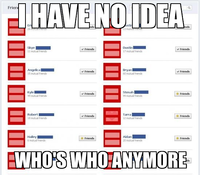About
Slacktivism, a portmanteau of slacker and activism, is often used with a negative connotation online to describe internet users who will participate in small methods of supporting or protesting a cause that often require little to no effort.
Origin
The term Slacktivism was coined for a 1995 seminar series given by Fred Clark and Dwight Ozard at that year’s Cornerstone Festival, a Christian arts and music gathering, held in Illinois.[1] The seminars focused on the positive ways young people were making changes in the world, juxtaposed against the idea that most teenagers at the time were lazy and unconcerned with working towards a greater good. Clark noted that they chose to use filmmaker Richard Linklater’s positive interpretation of the word “slacker,” meaning people who choose not to waste their time on things that have “nothing to do with who they are.”[2]
Spread
In February 2001, Newsday[3] reported about an email petition that had been circulating for six years, raising awareness about government cutbacks for PBS, National Public Radio and art programs in general by asking people to forward the message to everyone they knew, hoping that after a large amount of signatures had been amassed, the email would get back to the students who would forward it to the government. However, the school shut down the students’ email addresses soon after the email began circulating due to the strain on their mail servers. The Newsday article noted this circulated email, and others like it that flooded the web in the 1990s and early 2000s[4], were an example of meaningless slacktivism, despite their good intentions.
Many of these viral emails were archived on hoax-busting Snopes, whose owner Barbara Mikkelson explained slacktivism as “the desire people have to do something good without getting out of their chair” to the New York Times[5] in May 2002.
Slacktivism was first added to Urban Dictionary[11] in October 2003, relating the act to signing email petitions. This definition was chosen as the March 28th, 2008 Urban Word of the Day. In June 2008, PR Watch[12] offered an offline definition of the practice, comparing forwarding emails to buying rubber bracelets and magnetic car ribbons for causes. Later that year, slacktivism was discussed on NPR[13] for the first time.
Throughout 2009, arguments for and against slacktivism appeared on The Sydney Morning Herald[14], The Globe and Mail[15], Foreign Policy Net.Effect[16], Social Citizens[17] and the Bayer Center for Nonprofit Management.[18] While the activities often associated with slacktivism do not appear to do anything, the positive arguments asserted that word of mouth played a role in why people actually participate in these online activities, which may result in someone hearing about or participating in a cause they may not have interacted with at first, on and offline. The offline effects of online activism were studied by Henrik Serup Christensen in a paper for the internet culture journal First Monday[19] in February 2011. His research concluded that while there was no strong correlation between online and offline participation, online activities characterized as slacktivism had no negative effect on a person’s habits.
Notable Examples
Bra Status Updates
In January 2010, Slacktivism was associated with Bra Status Updates, an online survey game that suggested women update their Facebook status with the color of the bra they were wearing to spread breast cancer awareness. After the trend went viral on Facebook, sites including TrendHunter[6], marketing group MAI Strategies[7], Sociology Lens[8] Newsweek[9] and Jezebel[10] all confirmed that this influx of Facebook status updates did not positively contribute to breast cancer research in any way.
Facebook Cartoon Profile Picture Week
In November 2010, a Facebook user named Dheepak Krishnamurthy created an event page for Cartoon Character Profile Picture Week, asking other users to change their Facebook photos to a cartoon character for a a week for fun. As it spread to the media in early December, the message got misconstrued as an anti-child abuse campaign. The act was criticized by bloggers who saw these profile photo changes as quickly fleeting moments of activism.[20] The profile photo campaign also led Psychology Today[21] to analyze the habits of Slacktivists, noting that people participating in these online campaigns will feel like they have done their part already, leading to causes receiving less donations or volunteers than they would have otherwise.
Kony 2012
In February 2012, the nonprofit organization Invisible Children launched the campaign Kony 2012 to raise awareness about the Ugandan guerrilla leader Joseph Kony for his role as head of the Lord’s Resistance Army, which was notorious for kidnapping children, making females become sex slaves and males become soldiers. The 30-minute video aimed at arresting Kony by the end of 2012 and was followed by instructions on how to support the cause by spreading the video and donating to Invisible Children.
Within 16 days, the first version of the video received more than 7 million views. After it was uploaded to YouTube on March 5th, the video saw more than 43 million views within 72 hours, later becoming marked as the fastest growing viral video of all time. In late February and early March, several hashtags relating to the video began to globally trend on Twitter. The video also instructed viewers to launch real-life protests in an event called Cover The Night, scheduled for April 20th, 2012. Across the globe, these protests fell flat including in Australia, where 25 out of nearly 19,000 Facebook attendees showed up for an event in downtown Sydney. Additionally, many observers online noted that support had dwindled, as no Kony-related hashtags were trending on Twitter.
#ThatAwkwardMoment when #Kony2012 isn’t trending on the day the magic is to happened.. Kind of disappointed, I haven’t even see a poster.
— Bob Fite (@BobFiteSup) April 20, 2012
Following the release of a second video in October, approximately 3000 youths and college students out of 11,000 registrants attended a rally on the White House lawn organized by Invisible Children. As of April 2013, Kony has not been captured.
Red Equal Sign
On March 25th, 2013, the Human Rights Campaign urged their Facebook followers to change their profile picture to a Red Equal Sign the following day, to show support for same-sex marriage as the United States Supreme Court began to deliberate on its legality. In less than 24 hours, the post accrued nearly 17,000 likes and more than 60,000 shares. Within hours, dozens of celebrities on Facebook including George Takei and at least 13 United States Congress members all changed their photos, with many people and corporate pages across the site using variations on the image to reflect their personal interests or brand, respectively.
Four days later, Facebook revealed that there was a 120% increase in profile photo changes that day, with more than 2.7 million people changing their pictures. Despite this, the profile photos saw some criticism across social networks[22] from people who saw the support as an empty gesture that would not enact meaningful change.
Keep up the red equal sign postings, I heard the Supreme Court justices are going through and counting all the profile pictures right now.
— Shayn Fernandez (@Shaynislegend) March 27, 2013
Search Interest
External References
[1]Patheos – Slacktivist: Etymology
[2]Wikipedia – Slacker (film): Impact
[3]Newsday – On the Net, "Slacktivism’ / Do-gooders flood in-boxes
[4]Hoax-Slayer – Are Email Petitions Useful?
[5]New York Times – They Weren’t Careful What They Hoped For
[6]TrendHunter – Breast Cancer Slacktivism
[7]MAI Strategies – Facebook Memes: Slacktivism or Social Movement?
[8]Sociology Lens – facebook slacktivism: some perspective
[9]The Daily Beast – From Newsweek: What Color Is Your Bra? Facebook’s Pointless Underwear Protest.
[10]Jezebel – Thanks For Sharing, But Your Bra Color Isn’t Going To Cure Cancer
[11]Urban Dictionary – Slacktivism
[12]PR Watch – Corporate-Sponsored “Slacktivism”: Bigger and More Dangerous than the Urban Dictionary Realizes
[13]NPR– Slaktivists Are The New Activists
fn14. Sydney Morning Herald – Slacktivism: Can social media actually cause social change?
[15]Globe and Mail – A slacktivist and his crackberry are seldom parted
[16]Foreign Policy Net.Effect – The brave new world of slacktivism
[17]Social Citizens – MILLENNIALACTIVISM: IS IT ACTIVISM 2.0 OR SLACKTIVISM?
[18]Bayer Center – In Defense of Slacktivism
[19]First Monday – Political activities on the Internet: Slacktivism or political participation by other means?
[20]Random Acts of Data – Slacktivism or Why I Hate Facebook Profile Memes
[21]Psychology Today – Are you a Slacktivist?
[22]International Business Times – The Pink Equal Sign Facebook Campaign: Powerful Solidarity Or Empty Slacktivism?







